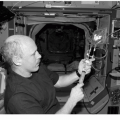Most epidemiologic studies conducted on commercial airline pilot populations before 1990, concerned medical disqualification and/or in-flight incapacitation. More recent studies have examined morbidity and mortality more generally, with particular attention to cancer.
Airline Pilot Disability and Mortality
Preston reported 73 disqualifications among 1,000 British airline pilots who had flown between 1954 and 1965, of them 49% for psychiatric and 10% for cardiovascular reasons (
77). Twenty-two of 27 pilots who died (81%) did so as a result of a noncommercial aircraft accident. LaVehrne found that among 1,250 Air France pilots, there were 64 permanent groundings, 34% for cardiovascular and 17% for psychiatric reasons (
78), while Kidera observed that of 123 medical groundings of United Airlines pilots between 1938 and 1966, 42% were for cardiovascular and 14% for psychiatric reasons (
79). In another U.S. airline pilot population (Northwest Airlines), Orford found that cardiac disease accounted for 51%, psychiatric diagnoses for 13%, and neurologic problems for 12% of 103 medical retirements (
80). Holt updated the study in 1985, again finding that cardiovascular disease was responsible for 50% of the medical losses in the years since the first study (
81).
Band et al. conducted mortality and cancer incidence studies of pilots in two Canadian airlines. Of 913 Canadian airline pilots employed from 1950 through 1988, he found that 71 had died, 23 (32%) in aircraft accidents, 18 (25%) from cardiovascular conditions, 16 (23%) from cancer, and 14 (20%) from other causes (
82). For all causes, the standardized mortality rate (
SMR) was lower than expected (0.80) consistent with the “healthy worker” effect (healthy workers have lower overall death rates than the general population due to exclusion of the severely ill and disabled). However, SMRs were significantly raised for aircraft accidents (21.29), rectal cancer (4.35), and brain cancer (4.17). There were 57 incident cancer cases ascertained from provincial cancer registries with significantly elevated SMRs being noted for Hodgkin’s disease (4.54), primary brain cancer (3.45), and nonmelanoma skin cancer (1.59).
In a second study, of 2,740 Air Canada pilots employed for at least 1 year between 1980 and 1992, Band again observed a significant reduction in mortality from all causes (
SMR 0.63) and an elevated
SMR for aircraft accidents (26.57). Among cancers, SMRs for acute myeloid leukemia (4.72) and prostate cancer (1.87) were significantly increased, although the
SMR for all cancers (0.61) was significantly decreased. SMRs for malignant melanoma were increased in both studies, but not to the level of statistical significance (
83).
In another study, Band found that long-term disability (LTD) rates among Air Canada pilots increased with age, rising from 1.86/1,000 pilots/yr at age 20 to 29, to 9.22/1,000/yr in those aged between 50 and 59 (
84). Injuries were most significant among the younger pilots (66% of all causes of LTD under age 30); mental disorders including alcoholism were the most prevalent noninjury conditions among pilots aged 30 to 49 (25.4% of noninjury); while ischemic heart disease was significant in the oldest age-group (27.9% of all noninjury causes between age 50 and 59). Band pointed out that more attention to physical conditioning and other lifestyle modification measures could have prevented many of the injuries and circulatory disorders. He urged pilot associations and airline companies to work together to ensure that preventive programs are implemented.
Irvine and Davies used proportional mortality ratio (
PMR) methodology to study mortality and life expectancy in British Airways flight deck crew between 1966 and 1989. Cause of death was ascertained in 411 of 446 cases, and “the predictable excess of aircraft accidents was removed.” Significantly elevated PMRs were observed for malignant melanoma (6.69), cirrhosis (2.88), colon cancer (2.30), and brain/central nervous system (
CNS) cancer (2.68) (
85). These authors subsequently extended their study to all British Airways pilots and flight engineers employed for at least a year between 1939 and 1992 (
86). Standardized mortality ratios for cirrhosis, brain/
CNS cancer, and colon cancer were found to be no longer elevated to a level of statistical significance. The
SMR for melanoma was significantly raised for pilots, but not for flight engineers. The reason for this difference was not determined. Life expectancy for both groups exceeded that for the general population of England and Wales, even when social class differences were taken into account. Besco et al. similarly found that retired American Airlines pilots had a residual life expectancy after age 60 of greater than 5 years longer than the U.S. population of 60-year-old white males (
87).
All of the preceding studies concerned male pilots. The first airline pilot in the United States was not hired until 1973 (by Frontier Airlines). Nicholas published the first epidemiologic study concerning female pilots in 2002 (
88), with a follow-up study concerning an observed increase in breast cancer in this population in 2003 (
89). Additional studies on disability and mortality among female pilots are needed.
Ballard et al. conducted a meta-analysis of six cohort studies concerning male pilots and female flight attendants reported between 1986 and 1998. For pilots, overall mortality rates were decreased for all causes, lung cancer, all leukemia, ischemic heart disease, and respiratory disease (
90). Using a statistic he termed
combined socioeconomic status relative risk, he determined that cancer mortality rates were elevated for melanoma (1.97) and brain cancer (1.45), whereas cancer incidence rates were elevated for prostate cancer (1.65) and brain cancer (1.74).
A proportionate mortality study using mortality data from 24 U.S. states from 1984 and 1991 found that cancer of the kidney and renal pelvis was the only cause of death to be significantly increased among male pilots (
PMR 1.96) (
91). The authors noted that associations between kidney cancer and aviation fuels have been reported in other occupational health studies. However, this finding contrasted with the British Airways and Air Canada studies, both of which
found significantly lower rates than expected for kidney and bladder cancer among pilots (
83,
86). Finally, a large European study of 28,066 male and 262 female cockpit crewmembers found an increased mortality from malignant melanoma (
SMR 1.78) and from aviation accidents, but a reduction in mortality from lung cancer (
SMR 0.53) and cardiovascular disease (
92).
In summary, contrary to popular belief, airline pilots have an overall lower mortality rate than the general population, and on average live as much as 5 years longer than the general population after age 60. Mortality from noncommercial aircraft accidents is significantly raised. The most common reasons for medical disability are injuries among pilots younger age 30, mental disorders including alcoholism among pilots between 30 and 49, and circulatory disorders among pilots older than 50. Many of these conditions would be preventable by lifestyle modification. With the possible exception of melanoma, no form of cancer is consistently elevated in the pilot populations studied, and overall, the cancer rate for pilots is lower than the general population.
In-Flight Incapacitation
Episodes of in-flight incapacitation are frequently experienced by airline pilots [27%-29% of International Federation of Airline Pilots’ Associations (IFALPA) pilots surveyed in 1968 and 1998 reported having experienced at least one such occurrence] (
16,
93). The most frequent reason is gastrointestinal disturbances (uncontrolled diarrhea, nausea, vomiting, or severe indigestion). However, very few pilots report these events spontaneously and few, if any, commercial airline accidents have been attributed to pilot incapacitation or for medical causes (
94). This contrasts with general aviation, where several accidents caused by in-flight incapacitation occur each year as a result of cardiovascular/cerebrovascular events, alcohol or drug use, carbon monoxide poisoning, or seizures (
95). Human factors specific to aviation may also cause or contribute to in-flight incapacitation, including hypoxia, spatial disorientation, and improper G-protection maneuvers, as described elsewhere in this text (see
Chapters 2,
4, and
6). Most cardiovascular deaths in pilots younger than 35 years are due to hypertrophic cardiomyopathy (based on the sports medicine literature), whereas in men older than 35 years, nearly all are due to
CAD. Autopsy studies have shown the prevalence of significant
CAD in pilots to be similar to that in the general population (
96). In addition, although the mortality rate for cardiovascular disease among younger pilots is lower than the general population, cardiovascular mortality among older pilots approaches that found in the Framingham study (
Table 11-2) (
97). DeJohn has reviewed in-flight incapacitation studies conducted between 1968 and 2000 (
98). Mitchell and Evans examined the use of the “1% rule” by governments to set limits for aircrew incapacitation, and concluded that it may be too restrictive. They recommended instead that the maximum acceptable sudden incapacitation limit should be set at 2% per year (
99).
Cabin Attendants
The mortality and incidence rates for cancer among 1,577 female and 187 male cabin attendants were studied by Pukkala and Auvinen (
73). He observed statistically significant increases in SIR for breast cancer (1.87) and bone cancer (15.10), with the breast cancer risk being most prominent 15 years after recruitment. Significant increases for leukemia (3.57) and melanoma (2.11) were also seen. Lynge similarly reported an increased risk for breast cancer among Danish cabin attendants (SIR 1.61), although because of small numbers it was not statistically significant (
101). Wartenberg found an increased risk of breast cancer (SIR 2.0) among retired U.S. female cabin attendants (
102). Linnersjo found an SIR of 1.01 for cancer overall, and 1.3 for breast cancer (a nonsignificant increase), among Swedish cabin crews, although both men and women had increased rates of melanoma and nonmelanoma skin cancers (
103). Similarly, Haldorsen failed to find an increase in breast cancer incidence among Norwegian airline cabin attendants (SIR = 1.1), but he reported an increased incidence of melanoma and nonmelanoma skin cancers (
104). Elevated SMRs for acquired immunodeficiency syndrome (AIDS) and aircraft accidents have been reported among male cabin crew (
105).
A number of studies have examined the risk for spontaneous abortion and menstruation irregularities among female cabin attendants. Cone and Vaughan reported a 15% rate of spontaneous abortions among 9,392 flight attendants who were pregnant at any time between 1990 and 1991 (
106). This is comparable to the 10% to 20% rate reported for the general U.S. population. Aspholm reported in a retrospective Finnish study of 1,751 pregnancies among female cabin crew aged between 24 and 39, with the onset of pregnancy between 1973 and 1994, a spontaneous abortion rate of 12.1% (
107). Again, this rate is similar to that for all Finnish women. Both studies showed a slightly increased spontaneous abortion rate among those who worked during the first trimester of pregnancy, but pointed out that any employment during the
first trimester may be a risk factor for spontaneous abortion. Pregnancy outcome among cabin attendants (and pilots) is similar to that of the general population (
108).
The U.S. National Institute for Occupational Safety and Health (NIOSH) has published several papers to characterize radiation and other exposures in the aircraft cabin environment and to assess health effects among flight attendants and pilots as part of the “Flight Crew Research Program.”








